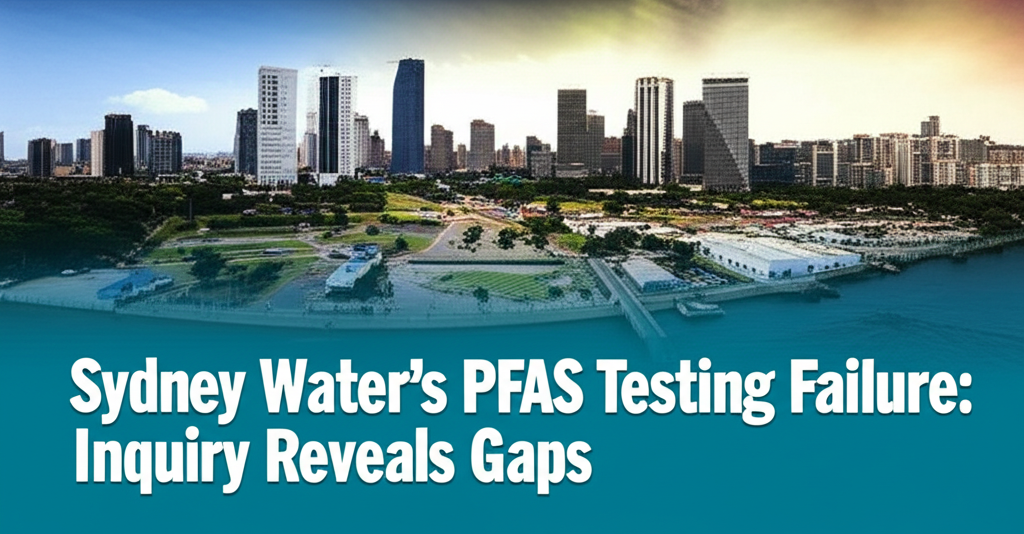Sydney Water PFAS Testing Flaws Exposed in Inquiry

Sydney Water's PFAS Testing Failure: Inquiry Reveals Gaps Sydney, Australia – A recently concluded inquiry has exposed significant shortcomings in Sydney Water's testing regime for per- and polyfluoroalkyl substances (PFAS), a group of man-made chemicals linked to various health problems
Background
The investigation, initiated following community concerns regarding potential PFAS contamination in drinking water sources, has revealed inadequate testing protocols, a lack of transparency, and insufficient communication with the public
PFAS are a group of thousands of synthetic chemicals used in a wide array of products, including firefighting foam, non-stick cookware, and food packaging
They are known for their persistence in the environment and the human body, leading to concerns about their potential health effects, which include increased risk of certain cancers, immune system disorders, and developmental problems
The inquiry highlighted several key areas of concern
Firstly, the scope of PFAS testing conducted by Sydney Water was deemed insufficient.
While some sites were regularly monitored, others, particularly those near potential sources of contamination such as industrial areas and airports, were not adequately tested
This patchy coverage left significant gaps in understanding the overall extent of PFAS contamination in Sydney's water supply.
Secondly, the inquiry criticized the sensitivity of the testing methods employed
The detection limits used by Sydney Water were often higher than recommended by international standards, meaning that low levels of PFAS contamination could have gone undetected
This raised concerns that the true extent of contamination might be underestimated, potentially exposing the public to harmful levels of these chemicals
Furthermore, the inquiry found a lack of transparency in how Sydney Water communicated its PFAS testing results to the public.
Information was often presented in a complex and technical manner, making it difficult for ordinary citizens to understand the potential risks
There was also criticism of the timeliness of information dissemination, with delays in releasing test results raising concerns about public trust. "The inquiry's findings are deeply concerning," said Dr.
Emily Carter, an environmental health expert at the University of Sydney. "They highlight the urgent need for a comprehensive review of Sydney Water's PFAS testing and management practices.
The public has a right to know the extent of PFAS contamination in their water supply and the potential risks to their health.
" Sydney Water has acknowledged the inquiry's findings and has pledged to implement its recommendations
This includes increasing the scope and frequency of PFAS testing, adopting more sensitive testing methods, and improving communication with the public.
The utility also plans to invest in advanced treatment technologies to remove PFAS from drinking water sources
However, some community groups argue that these measures do not go far enough.
They are calling for a complete ban on the use of PFAS chemicals in Australia and for greater government oversight of Sydney Water's PFAS management practices
They also emphasize the need for ongoing monitoring and research to better understand the long-term health effects of PFAS exposure.
The implications of the Sydney Water PFAS testing failure extend beyond the immediate concerns about drinking water quality
The case highlights the broader challenges of managing PFAS contamination in the environment, including the need for better regulation of PFAS use, improved remediation technologies, and greater public awareness
It also serves as a reminder of the importance of rigorous environmental monitoring and transparent communication in protecting public health
Looking ahead, the Sydney Water PFAS inquiry is likely to have a significant impact on water management practices across Australia.
Other water utilities are already reviewing their own PFAS testing and management protocols in light of the inquiry's findings
The case may also lead to stricter regulations on PFAS use and disposal, as well as increased funding for PFAS research and remediation.
The future outlook demands proactive measures to mitigate PFAS contamination and safeguard public health and environmental well-being
In conclusion, the Sydney Water PFAS testing failure underscores the critical need for comprehensive and transparent environmental monitoring.
It is essential that water utilities prioritize public health and environmental protection by implementing robust testing protocols, employing advanced treatment technologies, and communicating openly with the communities they serve
The lessons learned from this inquiry will undoubtedly shape the future of PFAS management in Australia and beyond.
